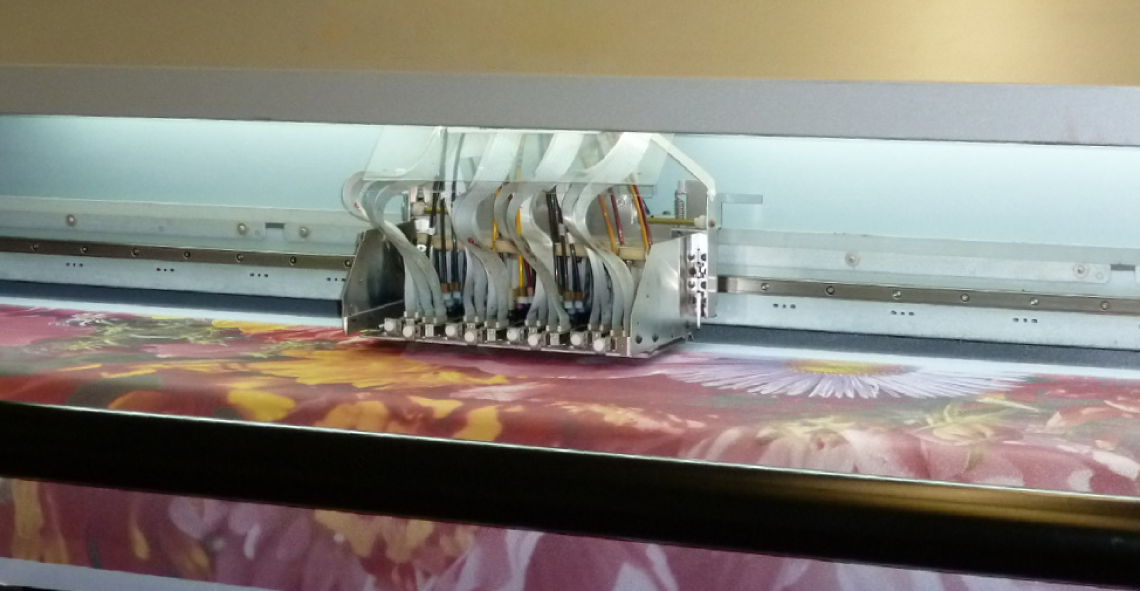Digital Pigment Printing Is Universally Applicable on All Fiber Substrates
The procedure is flexible and can be applied universally on all substrates. The market share of pigment printing within textile printing is still quite small. However, investments in the field of textile printing machines are mainly made in digital printing. In order to offer our customers the best products for digital pigment printing, we saw the importance to invest into researching and developing new procedures and auxiliaries.
The printing result in inkjet printing is not only related to the resolution of the inkjet printers and the used printing heads, but mainly depends on the quality of the printing pretreatment. With a good preparation and ideally matched textile auxiliaries you can achieve high definition, sharp edges, crisp outlines, and good color fastnesses with the low viscosity inks used in digital printing. At the same time, a pretreatment with thickeners and binder systems should not influence the fabric’s handle and the fabrics should preferably keep a soft, pleasant touch.
Preparation of Textiles for Inkjet Printing with Pigment Inks
For good fastness results in pigment printing the binders should be applied in relatively high amounts. It is not possible to formulate pigments plus any quantity of binders in the ink. When using high amounts of binders the viscosity of the ink would increase, exceeding the printability of the ink. Due to this fact, the binders have to be applied on the textile fabrics in a separate operation before printing with the pigment inks. The objective is, that the binding systems are optimally fixing the pigments, providing highest fastness levels. Despite all-over application the pretreatment should not have a negative influence on the fabric’s handle.
Textile Pretreatment with PERICOAT and PERIJET
A good pretreatment for digital inkjet printing with pigment inks can be achieved for example with our polymer compound PERICOAT AC 224 in combination with our crosslinking agent PERICOAT CROSSLINKER NF. The products can be applied before printing with pigment inks either by padding or by a one-side application in a screen printing process. Regardless of the influence on the handle, in our R&D project after printing one time we achieved rubbing fastnesses of grade 4-5, after overprinting three times we still achieved grade 4.
We obtained the best color fastnesses and handle results with a printing pretreatment comprising PERICOAT AC 224 plus PERICOAT CROSSLINKER NF in combination with a softening agent like PERISOFT SE or PERIPRINT SOFT. The color depth of the prints was further improved by adding PERIJET PRIME, a special polymer compound for inkjet printing pretreatment.
Printing with Binder-Containing Inks
A further possibility for improving the fastnesses is printing with binder-containing inks on pretreated textile fabrics. Therefore, we formulated inks containing pigment, binding agents and crosslinkers. These inks were printed on fabrics, which were pretreated with different binding systems. With the application of additional binders and crosslinking agents in the pigment inks the dry and wet rubbing fastnesses were further improved by a half fastness grade.
R&D Project Has Been Funded by ZIM
The presented results were elaborated in a joint research project with German Institutes of Textile and Fiber Research Denkendorf (DITF) on inkjet pretreatment for pigment printing. (Find more information about the project in German: High Color Fastness Levels when Printing with Pigment Inks). We thank the German Federal Ministry for Economic Affairs and Energy (BMWi) for the funding of this ZIM project. ZIM is a funding program of the BMWi for supporting the development of innovative concepts at small and medium-sized enterprises. In recent years we carried out joint research and development projects with DITF, for example on “New Applications for Chitosan in Textile Finishing” and “Printing Pretreatment for Textile Printing with Pigment Inks”.
Are You Interested in Further Details?

Are you interested in details of our R&D project on “Inkjet Pigment Printing”? Read more in the issue of the German textile specialist journal TEXTILplus (Nr. 9 /10-2018).
If you have further questions on digital inkjet printing on textiles, our printing specialists will be pleased to answer you. Send us an e-mail or a message via our contact form.
- Iris Rösch
- Application technology
- +49 7121 9589-63
- iris.roesch@drpetry.de


